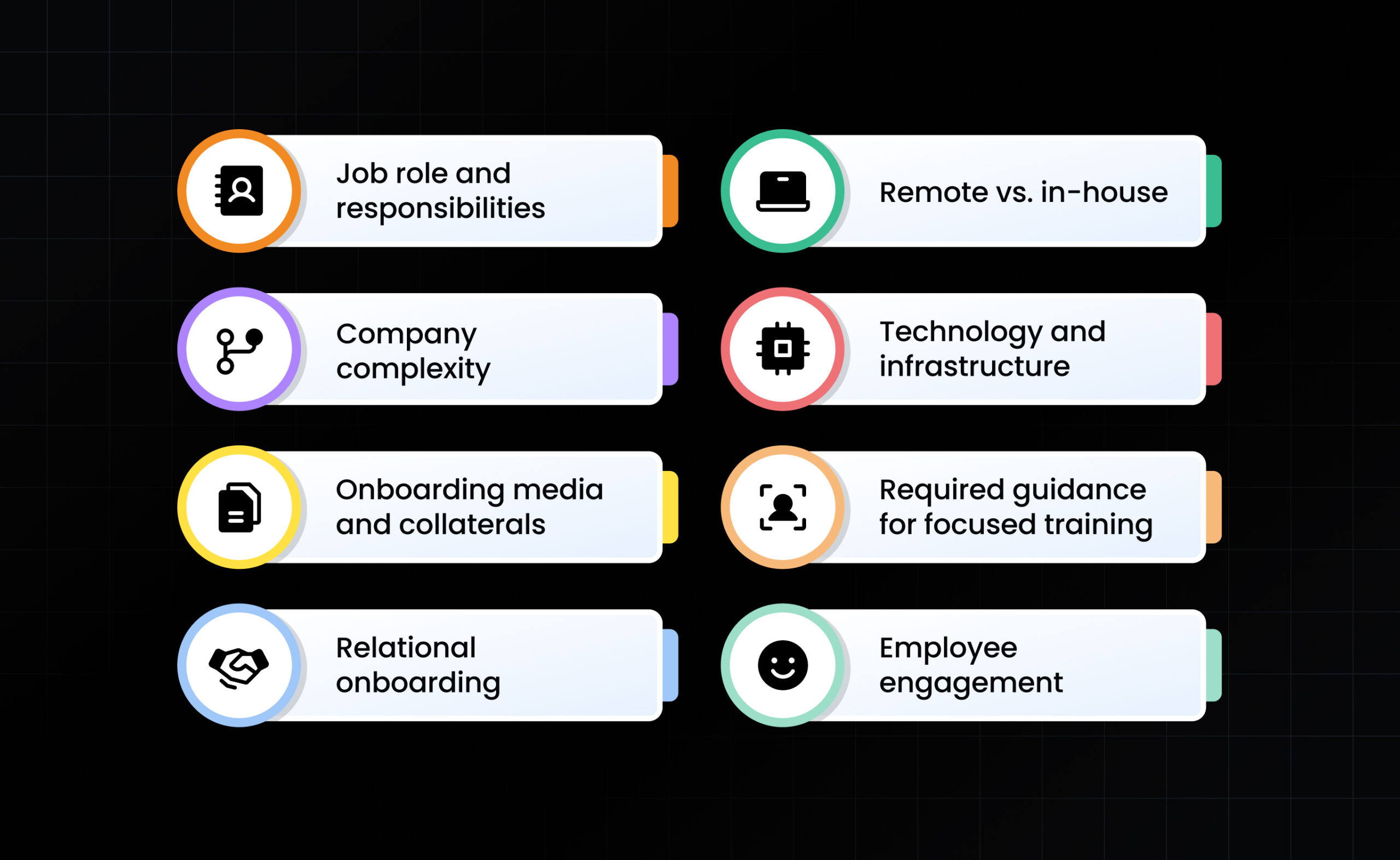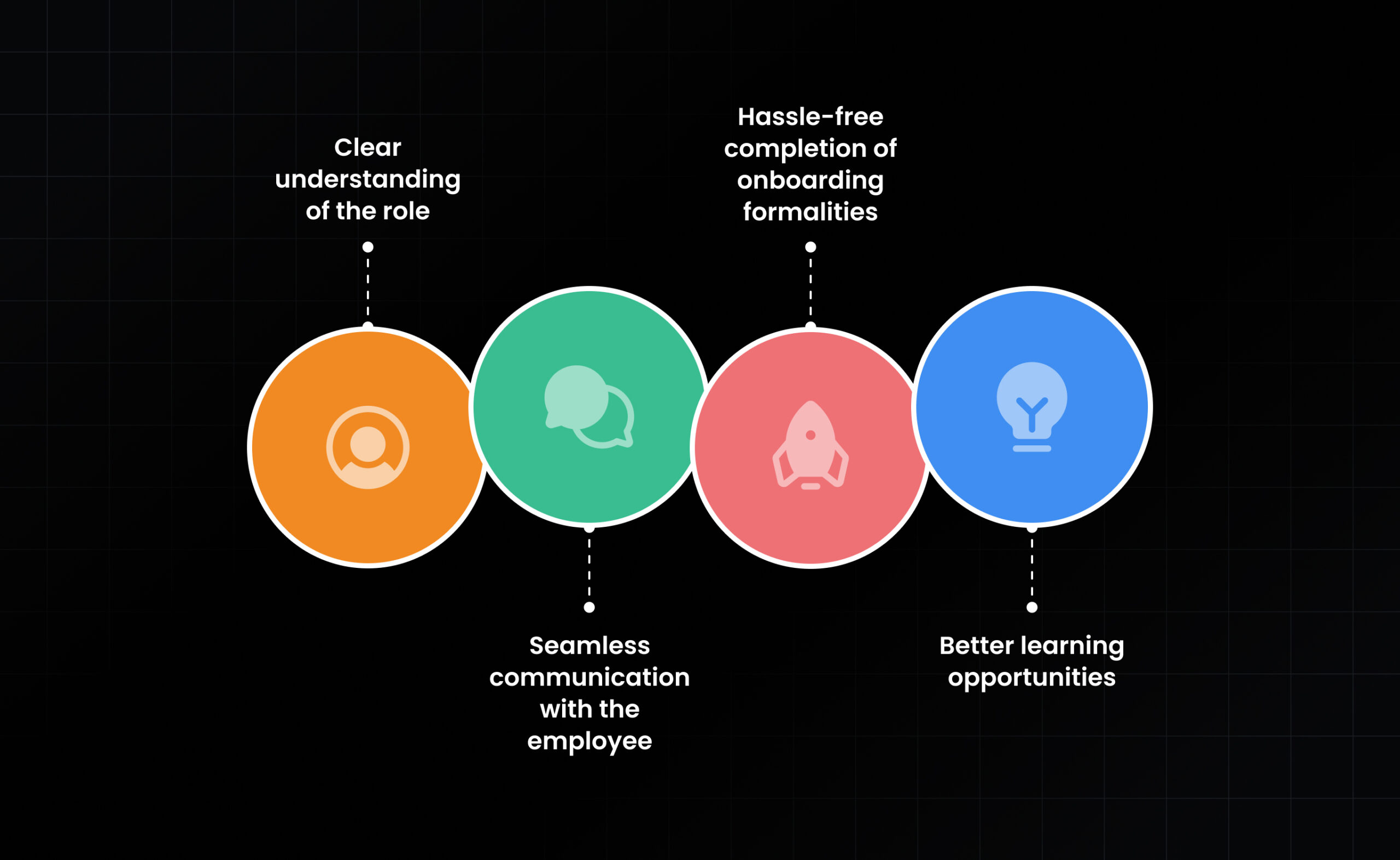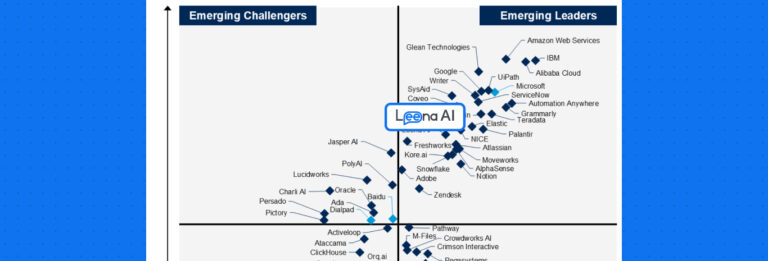Crafting a robust onboarding program is the best strategy to welcome, engage, and retain new employees in the organization. Companies that don’t prioritize employee onboarding face issues like attrition, disengagement, lower productivity, and much more.
But how long should your employee onboarding last? There is no specific answer to that. Since every business is different, the required employee onboarding timeline is different too.
This blog gives you comprehensive insights into the average onboarding time, the benefits of a lengthy onboarding, and the factors deciding the required time.
Why does the length of employee onboarding matter?
Employee onboarding programs that last less than a month negatively affect retention rates.
A month does not give a new employee enough time to complete-
- compliance tasks
- get familiar with the company’s culture
- receive sufficient job-specific training
- adjust to new technologies, and
- make an informed decision about whether the company and role are a good fit
While there is no ideal structure or average onboarding time defined to onboard new employees, it is recommended to find the right balance between both through customizations as per employee attributes and business requirements.
What factors impact the length of employee onboarding?

Every company, employee, and job role is different. So, you must tailor your onboarding process according to these factors.
Job role and responsibilities
Proper onboarding has many benefits – but the primary goal is to provide new employees clarity about their job roles. HRs and managers should communicate with new hires to help them understand what is expected of them, their responsibilities, and whom they can reach out to part with confusion.
If you hire externally, sharing these details with them while simultaneously onboarding might take HRs 30 days or more. Providing them with handbooks, templates, and resources is a good idea for consistent and focused onboarding.
Onboarding duration for internal hiring can vary. The newly promoted or transferred employee is already familiar with the company culture. However, every department functions differently, and your transferred employees must not feel out of place. To prevent this, different training, feedback, and socializing systems are necessary for a smooth transition.
Remote vs. in-house
Remote onboarding is blossoming due to the changing landscape of corporate work models. However, onboarding employees remotely is significantly trickier than on-site onboarding. One of the main difficulties here is the limited access to the new hires.
In-house onboarding is hands-on and flexible. You can check in on the recruits throughout the day and answer their queries in person. Moreover, face-to-face interactions give you a better idea of how comfortable they feel at their new job.
Conversely, remote onboarding does not allow you to go to your new employees’ desks and check in on them. Thus, you need to invest more and be extra attentive to ensure the remote hires get a smooth start at the company.
Company complexity
You must provide the new hires with a comprehensive overview of the company’s mission and values, product line, targeted audience, and the pain points your product solves. HRs must acquaint new employees with the organizational structure, processes, systems, infrastructure, facilities, tools, and interfaces to maintain a steady workflow quickly.
The duration depends on the complexity of this information. The more information you have, the longer it takes you to complete onboarding.
Technology and infrastructure
Giving an overview of your company and assigning them tasks is not a good practice to start with. For smooth and effective onboarding, you should provide your employees with equipment and access to the proper systems for training, especially for remote and hybrid workforces.
Of course, you should give your new employees complete guidance on using new software to avoid wasting time on system training. However, you also must consider that using technology at such a magnified level is still a relatively new concept, and some advanced tools have a steeper learning curve. Such factors also affect how long onboarding should take.
For faster onboarding, you can opt for automated systems. It will significantly reduce the time spent on repetitive tasks and transactional onboarding procedures, like completing paperwork, filling out forms, opening accounts, and granting permissions.
Onboarding media and collaterals
Discussing the mission, vision, and policies with your new employees on their first day only lays out the foundation. To make the impact concrete, companies can provide employees with handbooks and different visual content to familiarize them with company policies as a part of their onboarding process.
Employee handbooks are a handy guide and reference for company policies and procedures. However, employees may not find them very engaging.
Since people remember things better visually presented, implementing video-based training in your onboarding program makes the process more engaging and cost-effective.
Required guidance for focused training
A successful onboarding process requires different training modules and initiatives for diverse skills.
Your onboarding process must allow new hires enough time to absorb information. That way, they have more opportunities to build advanced skills that benefit your organization. While onboarding, you can also train employees to develop soft and technical skills to ensure personal development.
Relational onboarding
While completing necessary formalities like paperwork, handbooks, and training is crucial during onboarding, the process does not end there. Making your new hires feel welcome also plays a part in onboarding.
Thus, you may consider the relational aspect of onboarding to determine the duration. The strategy should nurture and welcome new employees and give them the needed support.
Focusing on delivering an exceptional onboarding experience will help them build strong relationships with their co-workers and quickly adapt to the new culture and processes.
Employee engagement
An essential part of your onboarding process is engaging the employee from the beginning. It is a massive element in deciding the duration of onboarding and cannot be taken lightly.
Your onboarding process cannot be solely transactional. It should be more collaborative and immersive to drive engagement in your new workers. This way, they will enjoy their jobs, feel committed to the company, and bring their best to their work.
What is the ideal timeline for employee onboarding?
While there is no set employee onboarding timeline that everyone should follow, here is a breakdown of some best practices you can implement based on the different stages.
Preboarding
Preboarding involves getting your employees ready to tackle their first day at work by making them aware of the culture, policies, and job responsibilities.
- A few days after offer-letter acceptance: Provide employees with a document checklist and a welcome package to introduce them to the company and core team members.
- A week after offer-letter acceptance: Share a detailed rundown of the official rules and regulations and working hours. Establish expectations.
- A day before joining: Send them a first-day plan and ensure employees have access to all the required systems and documents.
Onboarding Stage 1
The next stage focuses on the first week of the new employees in your company. The schedule includes introducing them to their team and the office and familiarizing them with your partners, customers, and competitors.
- Day 1: Officially welcome the new employee. Introduce them to the team and the product line. Help them complete the required paperwork.
- Day 2: Lay out job expectations and communicate their goals in the first week. Explain the KPIs and OKRs you will use to measure their performance.
- Day 3: Assign new hires an onboarding buddy to help them settle in. Introduce them to individuals who they should be going to for help.
- Day 4: Brief them about the company’s partners, customers, and competitors.
- Day 5 and 6: Encourage them to participate and get involved in the company.
- Day 7: Have a 1:1 meeting with the employee, and reflect on their first week at work. Appreciate their accomplishments and clear any doubts they may have.
Onboarding Stage 2
This stage covers employees’ first month at your company. The goal here is to drive more involvement and productivity and to provide feedback for a smooth transition.
- Day 9: Explain the feedback culture of the company, as well as the channels used to provide it. Ensure that their opinions are always welcome.
- Day 12: Arrange a coffee break with their assigned buddy for feedback.
- Day 14: Schedule a brief reflection session covering the events from the previous week. You can also hold a short learning quiz to test their knowledge of the company.
- Week 3: Encourage them to go through the company documents again. Schedule inter-departmental meetings and invite them.
- Week 4: Do the first-month check-in and provide necessary feedback. Share a survey and ask them to share their opinion on onboarding.
You can refer to this comprehensive onboarding checklist to avoid missing any vital step in the process.
Onboarding Stage 3
This stage covers new employees’ second to sixth months at the company. The process involves regular 1:1s and feedback sessions to get them to contribute more towards the company’s growth. Managers should also discuss with new hires plans to align their interests with company goals.
By then, internal training should also be complete. Now assign employees to more meaningful projects and encourage autonomy. Hold regular 1:1 and feedback sessions and a monthly check-in.
In the sixth month, share with them their six-month performance review. Encourage employees to create a plan for the next year and ask for feedback.
After six months, the onboarding might get completed. However, this is not a universal timeline, and the process may be shorter or longer based on the factors we explained earlier. This timeline is just a representation of the different milestones in onboarding.
Advantages of extended employee onboarding programs

Although the average time of employee onboarding varies for each company, here are some of the benefits that companies reap with extended onboarding programs:
Clear understanding of the role
A hurried onboarding puts unnecessary pressure on the new employee and does not give them enough space to get familiar with their job roles.
When HR takes time with onboarding, it allows the new employees more time to understand their job roles thoroughly. They can go through the intricacies of their daily duties, be familiar with the company policies, and feel at home during a reasonably timed onboarding.
Seamless communication with the employee
Everybody feels out of place in a new workplace. Building a bond with new colleagues requires time. Conducting an extended onboarding will give them ample chance to communicate better with their teammates. It will also allow you to build a good rapport with the new hire. Moreover, It gives new hires the confidence to reach out to you in case of any doubts or questions.
Hassle-free completion of onboarding formalities
A reasonably long onboarding gives you a fair amount of time to set up equipment, access, and identification for your new hires. It avoids last-minute confusion and chaos.
Better learning opportunities
Taking time with onboarding allows you to integrate different training modules for new hires. You can get them acquainted with various aspects of expertise and develop multiple soft skills.
Regardless of the skepticism, lengthy programs are engaging

There is a fair amount of cynicism around lengthy onboarding programs. However, considering factors like necessary timelines underscores the benefits.
Not only this, but organizations must also understand the stark difference between manual and automated onboarding. While manual onboarding is tedious, automated onboarding is simple and helps engage new hires in this modern work environment.
Leena AI’s digital onboarding solution automates the entire onboarding of your new hires. It does all the heavy lifting for you right from preboarding to collecting documents of new hires, assigning them an onboarding buddy, and analyzing their onboarding experience via interactive surveys.
Our automated onboarding solution has a virtual assistant that keeps new hires engaged, assists them with their queries or requests, and thus ensures their faster acclimation in the organization.
If you are still unable to decide on the course of your onboarding program and the software you should choose, talk to our onboarding experts today!






